RU.521 mitigates subarachnoid hemorrhage-induced brain injury via regulating microglial polarization and neuroinflammation mediated by the cGAS/STING/NF-κB pathway
- PMID: 37770901
- PMCID: PMC10537158
- DOI: 10.1186/s12964-023-01274-2
RU.521 mitigates subarachnoid hemorrhage-induced brain injury via regulating microglial polarization and neuroinflammation mediated by the cGAS/STING/NF-κB pathway
Erratum in
-
Correction: RU.521 mitigates subarachnoid hemorrhage-induced brain injury via regulating microglial polarization and neuroinflammation mediated by the cGAS/STING/NF-κB pathway.Cell Commun Signal. 2024 Aug 6;22(1):390. doi: 10.1186/s12964-024-01772-x. Cell Commun Signal. 2024. PMID: 39107840 Free PMC article. No abstract available.
Abstract
Background: The poor prognosis of subarachnoid hemorrhage (SAH) is often attributed to neuroinflammation. The cGAS-STING axis, a cytoplasmic pathway responsible for detecting dsDNA, plays a significant role in mediating neuroinflammation in neurological diseases. However, the effects of inhibiting cGAS with the selective small molecule inhibitor RU.521 on brain injury and the underlying mechanisms after SAH are still unclear.
Methods: The expression and microglial localization of cGAS following SAH were investigated with western blot analysis and immunofluorescent double-staining, respectively. RU.521 was administered after SAH. 2'3'-cGAMP, a second messenger converted by activated cGAS, was used to activate cGAS-STING. The assessments were carried out by adopting various techniques including neurological function scores, brain water content, blood-brain barrier permeability, western blot analysis, TUNEL staining, Nissl staining, immunofluorescence, morphological analysis, Morris water maze test, Golgi staining, CCK8, flow cytometry in the in vivo and in vitro settings.
Results: Following SAH, there was an observed increase in the expression levels of cGAS in rat brain tissue, with peak levels observed at 24 h post-SAH. RU.521 resulted in a reduction of brain water content and blood-brain barrier permeability, leading to an improvement in neurological deficits after SAH. RU.521 had beneficial effects on neuronal apoptosis and microglia activation, as well as improvements in microglial morphology. Additionally, RU.521 prompted a shift in microglial phenotype from M1 to M2. We also noted a decrease in the production of pro-inflammatory cytokines TNF-α, IL-1β, and IL-6, and an increase in the level of the anti-inflammatory cytokine IL-10. Finally, RU.521 treatment was associated with improvements in cognitive function and an increase in the number of dendritic spines in the hippocampus. The therapeutic effects were mediated by the cGAS/STING/NF-κB pathway and were found to be abolished by 2'3'-cGAMP. In vitro, RU.521 significantly reduced apoptosis and neuroinflammation.
Conclusion: The study showed that SAH leads to neuroinflammation caused by microglial activation, which contributes to early brain injury. RU.521 improved neurological outcomes and reduced neuroinflammation by regulating microglial polarization through the cGAS/STING/NF-κB pathway in early brain injury after SAH. RU.521 may be a promising candidate for the treatment of neuroinflammatory pathology after SAH. Video Abstract.
Keywords: Early brain injury; Microglia; NF-κB; Neuroinflammation; STING; Subarachnoid hemorrhage; cGAS.
© 2023. The Author(s).
Conflict of interest statement
The authors declare no competing interests.
Figures

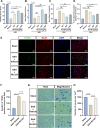
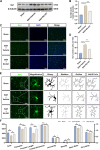
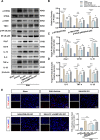
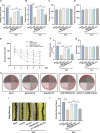
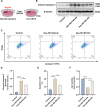
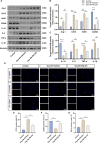
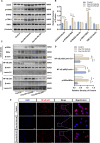

Similar articles
-
Mitophagy and cGAS-STING crosstalk in neuroinflammation.Acta Pharm Sin B. 2024 Aug;14(8):3327-3361. doi: 10.1016/j.apsb.2024.05.012. Epub 2024 May 13. Acta Pharm Sin B. 2024. PMID: 39220869 Free PMC article. Review.
-
Propofol alleviates M1 polarization and neuroinflammation of microglia in a subarachnoid hemorrhage model in vitro, by targeting the miR-140-5p/TREM-1/NF-κB signaling axis.Eur J Histochem. 2024 Sep 17;68(3):4034. doi: 10.4081/ejh.2024.4034. Eur J Histochem. 2024. PMID: 39287134 Free PMC article.
-
Hydrogen-Rich Saline Attenuated Subarachnoid Hemorrhage-Induced Early Brain Injury in Rats by Suppressing Inflammatory Response: Possible Involvement of NF-κB Pathway and NLRP3 Inflammasome.Mol Neurobiol. 2016 Jul;53(5):3462-3476. doi: 10.1007/s12035-015-9242-y. Epub 2015 Jun 20. Mol Neurobiol. 2016. PMID: 26091790
-
Silybin attenuates microglia-mediated neuroinflammation via inhibition of STING in experimental subarachnoid hemorrhage.Int Immunopharmacol. 2025 Apr 4;151:114305. doi: 10.1016/j.intimp.2025.114305. Epub 2025 Feb 21. Int Immunopharmacol. 2025. PMID: 39986195
-
Novel insight into cGAS-STING pathway in ischemic stroke: from pre- to post-disease.Front Immunol. 2023 Oct 17;14:1275408. doi: 10.3389/fimmu.2023.1275408. eCollection 2023. Front Immunol. 2023. PMID: 37915571 Free PMC article. Review.
Cited by
-
Mitophagy and cGAS-STING crosstalk in neuroinflammation.Acta Pharm Sin B. 2024 Aug;14(8):3327-3361. doi: 10.1016/j.apsb.2024.05.012. Epub 2024 May 13. Acta Pharm Sin B. 2024. PMID: 39220869 Free PMC article. Review.
-
The role of protein lactylation in brain health and disease: current advances and future directions.Cell Death Discov. 2025 Apr 30;11(1):213. doi: 10.1038/s41420-025-02408-w. Cell Death Discov. 2025. PMID: 40307243 Free PMC article. Review.
-
Shikonin attenuates blood-brain barrier injury and oxidative stress in rats with subarachnoid hemorrhage by activating Sirt1/Nrf2/HO-1 signaling.Korean J Physiol Pharmacol. 2025 May 1;29(3):283-291. doi: 10.4196/kjpp.24.182. Korean J Physiol Pharmacol. 2025. PMID: 40254555 Free PMC article.
-
Ganoderma lucidum polysaccharide attenuates retinal ischemia-reperfusion injury by regulating microglial M1/M2 polarization, suppressing neuroinflammation and inhibiting JAK2/STAT3 pathway.Biochem Biophys Rep. 2025 Jan 29;41:101926. doi: 10.1016/j.bbrep.2025.101926. eCollection 2025 Mar. Biochem Biophys Rep. 2025. PMID: 39944465 Free PMC article.
-
Correction: RU.521 mitigates subarachnoid hemorrhage-induced brain injury via regulating microglial polarization and neuroinflammation mediated by the cGAS/STING/NF-κB pathway.Cell Commun Signal. 2024 Aug 6;22(1):390. doi: 10.1186/s12964-024-01772-x. Cell Commun Signal. 2024. PMID: 39107840 Free PMC article. No abstract available.
References
-
- Zhang T, Wu P, Budbazar E, Zhu Q, Sun C, Mo J, Peng J, Gospodarev V, Tang J, Shi H, Zhang JH. Mitophagy Reduces Oxidative Stress Via Keap1 (Kelch-Like Epichlorohydrin-Associated Protein 1)/Nrf2 (Nuclear Factor-E2-Related Factor 2)/PHB2 (Prohibitin 2) Pathway After Subarachnoid Hemorrhage in Rats. Stroke. 2019;50:978–88. 10.1161/STROKEAHA.118.021590 - DOI - PMC - PubMed
-
- Tian Y, Liu B, Li Y, Zhang Y, Shao J, Wu P, Xu C, Chen G, Shi H. Activation of RARalpha Receptor Attenuates Neuroinflammation After SAH via Promoting M1-to-M2 Phenotypic Polarization of Microglia and Regulating Mafb/Msr1/PI3K-Akt/NF-kappaB Pathway. Front Immunol. 2022;13:839796. 10.3389/fimmu.2022.839796 - DOI - PMC - PubMed
Publication types
MeSH terms
Substances
Grants and funding
- 2021Y10/Young Medical Talent Funding Project of The First Affiliated Hospital of Harbin Medical University
- YQ2019H05/Natural Science Foundation of Heilongjiang Province of China
- 82071309/National Natural Science Foundation of China
- 2022ZX06C03/Key Research and Development Plan Project of Heilongjiang Province
LinkOut - more resources
Full Text Sources
Research Materials

